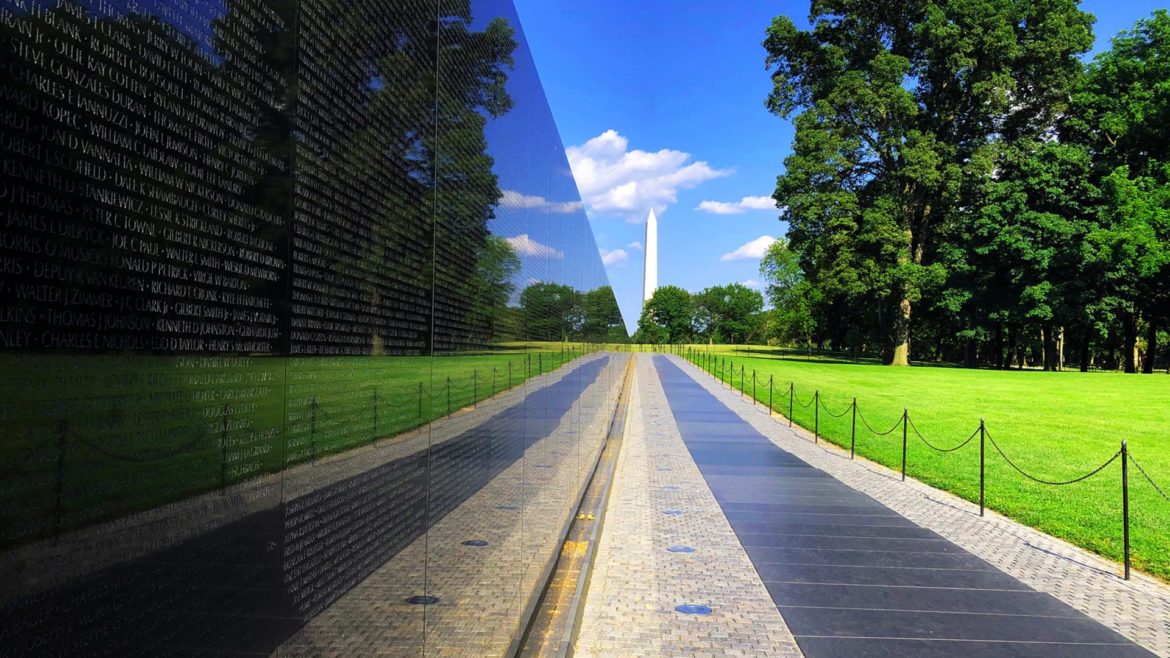Named one of Time Magazine’s “100 Most Influential People of 2022, Maya Ying Lin, an American designer and sculptor, was born in rural Ohio in 1959, ten years after her parents immigrated from China. A dedicated student and budding artist, she was devoted to environmental issues from a young age, inspired by the Hopewell and Adena Indian burial grounds near her home. “My work is about finding a balance in the landscape,” she has said.
As her time as an undergraduate at Yale came to a close, Maya entered a public competition to design the Vietnam Veterans Memorial, to be built on the National Mall in Washington, D.C. From over 1,400 submissions, her design was chosen, and in October 1982 work was completed on the black granite wall, inscribed initially with the names of 57,939 fallen soldiers, and to which hundreds more have been added since.
At the time of its announcement and installation, the memorial met with controversy for a number of reasons. According to one writer, “Some viewed her selection as an affront [and] could not understand how a woman, a youth, and a Chinese American could design a memorial for men, for soldiers, and for Americans.” When asked about it, Maya explained, “I imagined taking a knife and cutting into the earth, opening it up, and with the passage of time, that initial violence and pain would heal.”.

Image courtesy of time.com
She said that she had no interest in her cultural background until she was in her 30s, though early on, she drew on her connection to the environment. “I’m very much a product of the growing awareness about ecology and the environmental movement … I am very drawn to landscape, and my work is about finding a balance in the landscape, respecting nature not trying to dominate it,” Maya says.
Maya stayed at Yale to earn her master’s degree in architecture and has devoted her energies to historical monuments and earthenworks creations. She constructs these with dirt and mostly uses recycled and sustainable materials to minimize carbon emissions in line with the ecosystems and locations where she creates her works, such as Wave Field (1995) and Eleven Minute Line (2004). “Even the Vietnam Veterans Memorial is an earthwork,” the artist explains. “All of my work is about slipping things in, inserting an order or a structuring, yet making an interface so that in the end, rather than a hierarchy, there is a balance and tension between the man-made and the natural.”
In 2006, she added to her use of natural elements by using aluminum tubing and paint to create Waterline, which she describes as a drawing instead of a sculpture that highlights the viewers’ relationship to the environment and their effect on bodies of water. Since 2010, she has been working on what she calls her “final memorial,” entitled What is Missing? which “exists not in one specific site but in many forms and in many places simultaneously.”
President Barack Obama awarded Maya the National Medal of Arts in 2009 and the Presidential Medal of Freedom in 2016. Says the 63-year-old creative, “I am always trying to find a balance between opposing forces, finding the place where opposites meet…existing not on either side but on the line that divides.”
By Laurie Wiles

